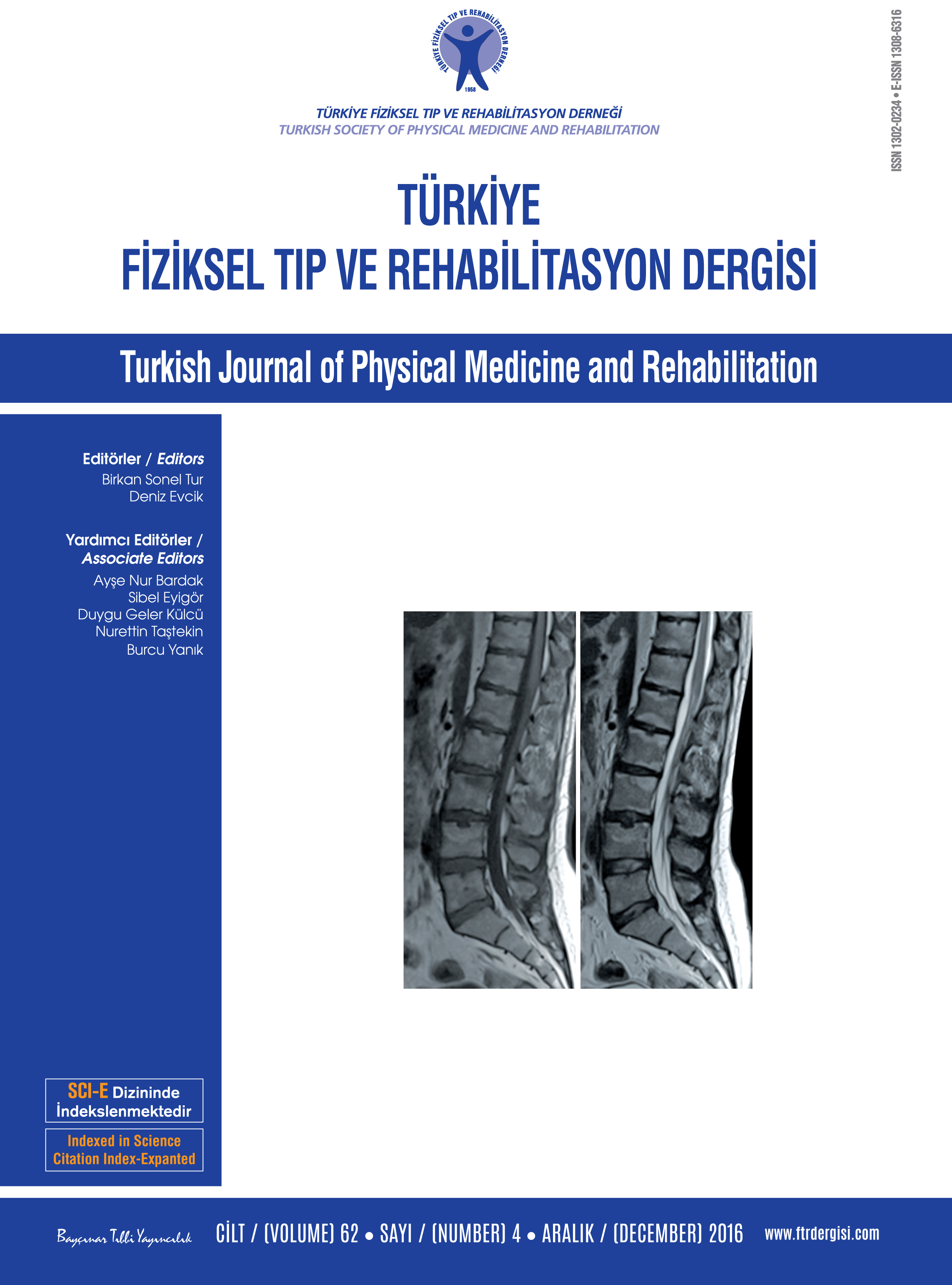Effect of upper extremity swing restrain on walking energy consumption and balance
2 Mersin Üniversitesi Tıp Fakültesi, Fizyoloji Anabilim Dalı, Mersin, Türkiye DOI : 10.5606/tftrd.2016.66564 Objectives: This study aims to investigate the effects of arm swing restrain on preferred walking speed, amount of oxygen spent during walking and vertical displacement of the center of mass.
Materials and methods: Between February 2011 and April 2011, a total of 52 healthy male volunteers, in the age range of 18 to 30, participated in the study and five different walking models were used. Individuals’ preferred walking speeds on the ground were determined for each model. Their oxygen expenditures were recorded while individuals walked on the treadmill at this speed for seven minutes. We placed a marker on the first sacral vertebrae and used two infrared cameras to determine the changes in vertical displacement of the center of mass during walking.
Results: We found a significant difference (F(3.734, 204) = 5.606, p<0.05) between normal (0.158±0.021 mL/kg/m) and at side restraint (0.166±022 mL/kg/m) and at front restraint (0.166±023 mL/kg/m) models in oxygen cost. We also found a significant difference (F(3.461, 204) = 5.144, p<0.05) between normal (3.81±0.94 cm) and at side restraint (4.36±1.05 cm) and at front restraint (4.25±0.93 cm) models in terms of vertical displacement of the center of mass. Preferred walking speed in the normal model (5.06±0.62 km/hr) was significantly higher (F(3.387, 204) = 10.433, p<0.05) than other models (at right restraint; 4.93±0.65 km/hr, at left restraint; 4.92±0.62 km/hr, at side restraint; 4.88±0.61 km/hr, and at front restraint; 4.88±0.56 km/hr).
Conclusion: We are of the opinion that arm swing helps providing balance but in the situation of both arm restrain, since biomechanical systems cannot compensate this modification, it may increase the vertical displacement of the center of mass and oxygen cost of walking. We think that our findings may help individuals with balance problems regarding the prevention of daily accidents.
Keywords : Balance; gait; oxygen consumption; speed; upper extremity
















